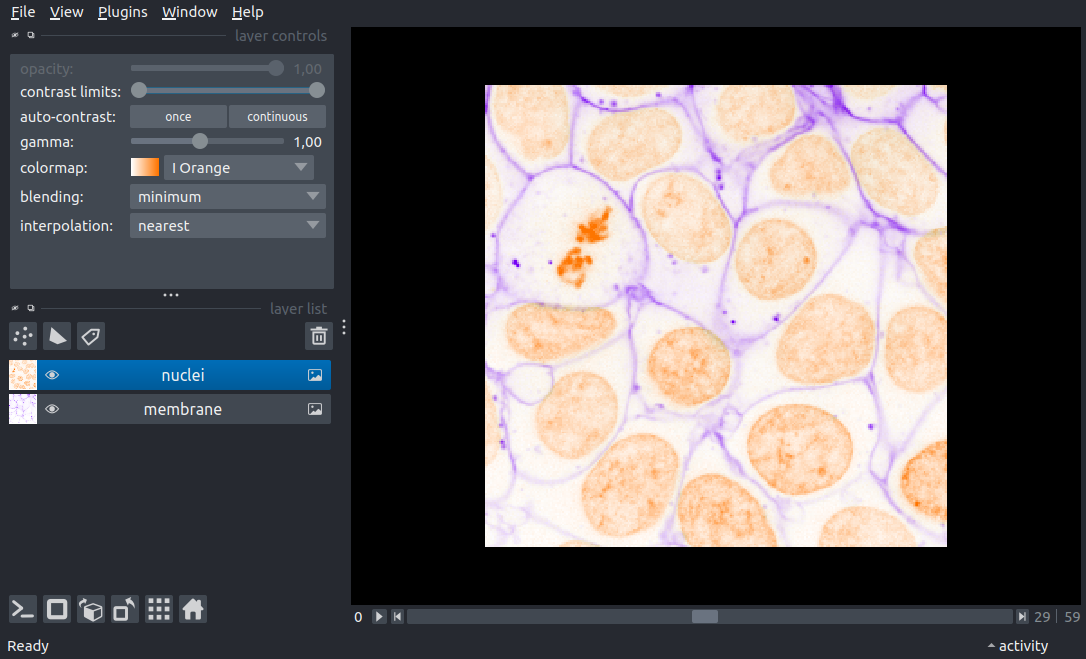Note
Go to the end to download the full example as a Python script or as a Jupyter notebook.
Minimum blending#
Demonstrates how to use the minimum blending mode with inverted colormaps. minimum blending uses the minimum value of each R, G, B channel for each pixel. minimum blending can be used to yield multichannel color images on a white background, when the channels have inverted colormaps assigned. An inverted colormap is one where white [1, 1, 1] is used to represent the lowest values, as opposed to the more conventional black [0, 0, 0]. For example, try the colormaps prefixed with I, such as I Forest or I Bordeaux, from ChrisLUTs: cleterrier/ChrisLUTs .

from skimage import data
import napari
# create a viewer
viewer = napari.Viewer()
# Add the cells3d example image, using the two inverted colormaps
# and minimum blending mode. Note that the bottom-most layer
# must be translucent or opaque to prevent blending with the canvas.
viewer.add_image(data.cells3d(),
name=['membrane', 'nuclei'],
channel_axis=1,
contrast_limits = [[1110, 23855], [1600, 50000]],
colormap = ['I Purple', 'I Orange'],
blending= ['translucent_no_depth', 'minimum']
)
if __name__ == '__main__':
napari.run()
